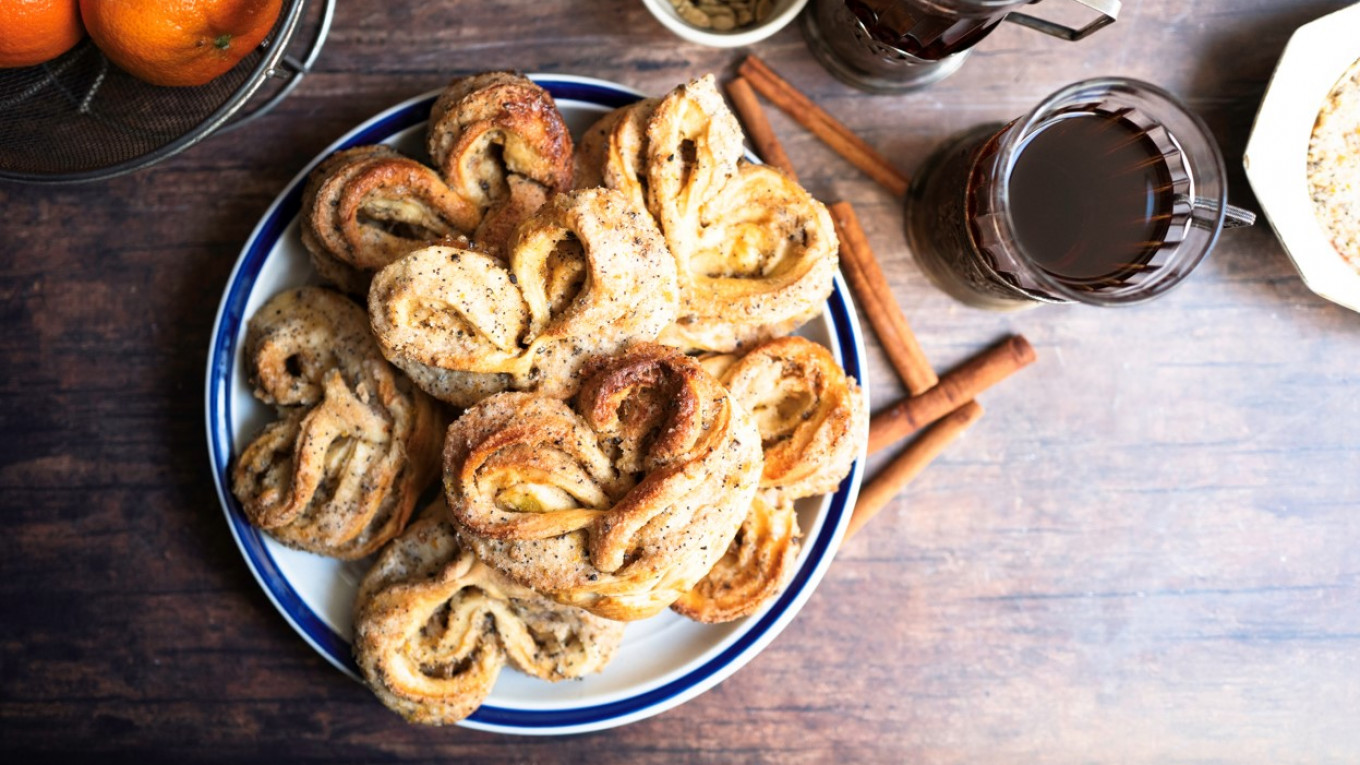Though I long to see the back of it, the Omicron variant has opened up vast swaths of time in my schedule. Easing back into self-imposed semi lockdown at this point feels like slipping on a comfy pair of fuzzy slippers: meetings on Zoom, business trips cancelled, and lots of unmolested time to fiddle in the kitchen.
“What on earth is going on?” my husband asked, surveying the entire kitchen island covered with cooling racks holding a battalion of heart-shaped pastries.
“I’m trying to crack plyushki,” I muttered, paging through a thick tome about pastry with sticky fingers.
This evoked hearty laughter.
“А мы тут, знаете, все плюшками балуемся…” (“and we’re here indulging ourselves with pastries”) my husband quoted the popular Soviet cartoon based on Karlsson-on-the-Roof by Swedish author Astrid Lindgren. The quote, like so many from Soviet-era cartoons and films, is now enshrined in the rich canon of Russian pithy sayings — in this case “indulging in plyushki” can refer to everything from culinary excess to an absorbing pastime.
It was exactly the inspiration I needed: as every aspiring baker knows, Sweden and buns together mean only one thing.
“Cardamom!” I said triumphantly, slamming the culinary tome shut and heading to the spice cupboard.
My husband snatched a plushka off the cooling tray and bid a hasty retreat.
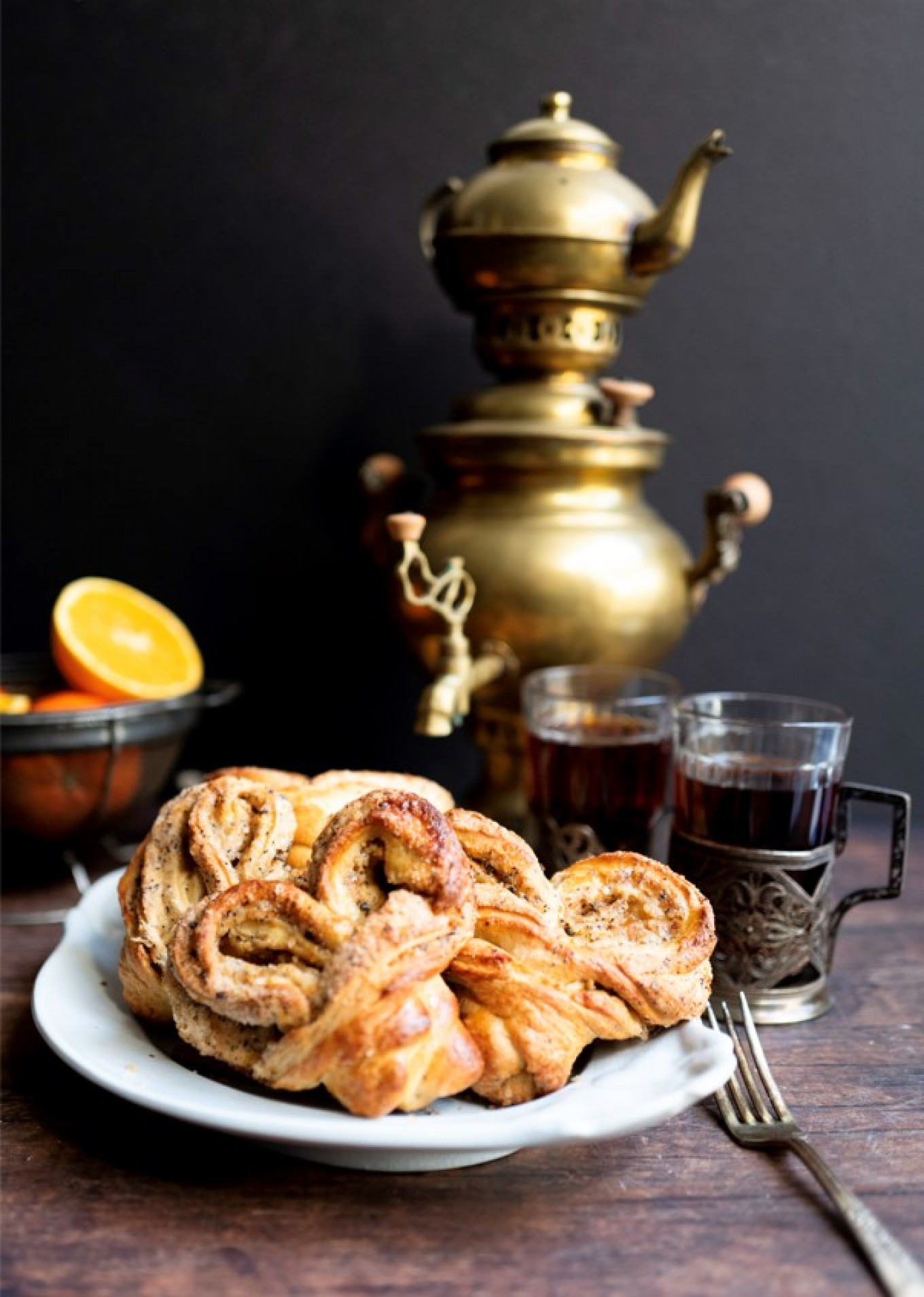
Plyushki are almost as old as Russia itself. Made from sweet, yeasty dough in pagan times, they were shaped and twisted into hearts, snails, or bows, or birds and were integral to rituals designed to coax the sun back to the frozen earth. In post-pagan times, they were a favorite treat for children, sprinkled liberally with sugar and cinnamon.
It seems a lifetime since I started my journey toward the perfect plyushka (it’s been 14 days). I began, as I always try to, with the authoritative Soviet GOST standard recipe, which I found bland, too oily, and with an almost elastic texture. This is a predictable reaction, and one that no longer horrifies me: starting with GOST is all about establishing a baseline of what the dish tasted like during an era of limited ingredients, and then trying to recreate it in our own era with a wider choice of ingredients. This kind of culinary puzzle is the perfect project when the temperature dips down below freezing, and, indeed, it took several batches to move in the right direction, during which our kitchen was effused in an almost constant, if delightful cinnamon-y, yeasty haze,
“Ummm…how much do we really want to indulge in plyushki?” my husband ruminated as I stacked the latest batch of plyushki in my largest plastic baker’s tub. We now had enough plyushki to invite the entire building over for tea and buns, had we been in normal, pre-Cpvid times.
“They’re not quite there yet,” I muttered, patiently zesting another orange.
Perfecting plyushki, as the Karlsson quote implies, turned out to absorb me for several days. Each morning, I woke early to mix up a new batch of dough and set it to rise, and then I fiddled with the all-important sugar filling for the plyushki. While cinnamon considerably enhanced the taste, it was still flat. After my husband made the Karlsson association, I added cardamom — the key flavor in Sweden’s iconic twisted buns, eventually coming up with the right balance between ground and whole cardamom seeds. What pulls these buns together, however, is orange and lots of it… juice, zest, and extract. Zest is the key to pulling the filling together into the consistency of slightly wet sand, and I infuse orange juice into the butter that coats the dough and holds the filling in place.
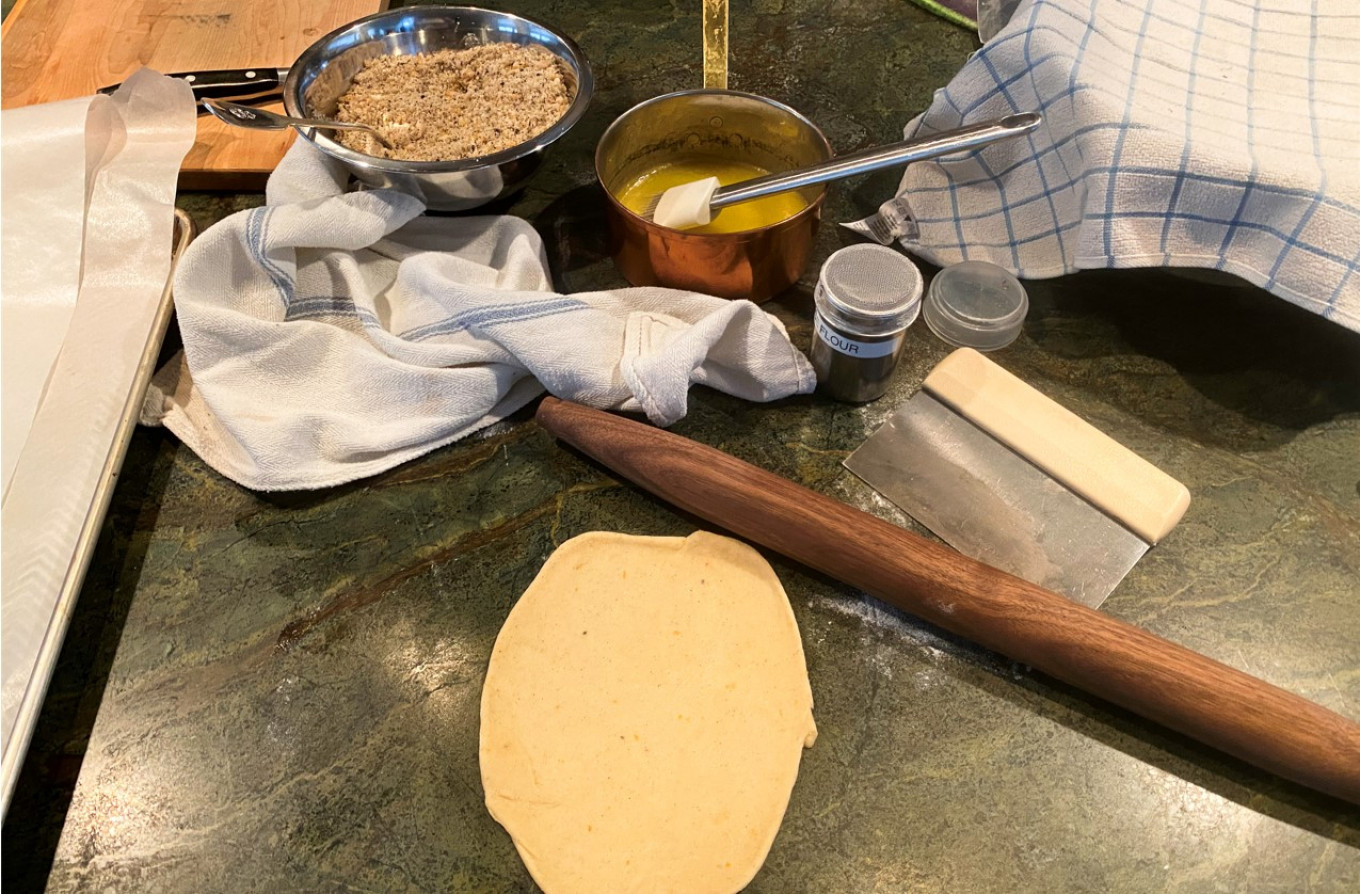
Assembling plyushki takes a bit of practice, but if you go slowly and carefully, it’s all very doable. Just remember these tips:
- Use a scale when dividing the dough to ensure that the plyushki are roughly the same size (approximately 100 grams). This will ensure the plyushki cook evenly.
- Leave a ¼-inch (6 mm) border around the perimeter of the dough when spooning on the sugar. This makes it much easier to pinch the dough together at the seam.
- Keep your hands clean and cool as you work with the dough, trying not to get any of the filling into the seams of the dough log.
- Use the sharpest knife you have to cut into the dough log into its signature heart shape and use a bench scraper or spatula to lift the plyushka on to your baking sheet.
The result is a delicious bun that is perfect with coffee, hot chocolate, or tea. Plyushki will keep for several days in an air-tight container. Thank goodness.
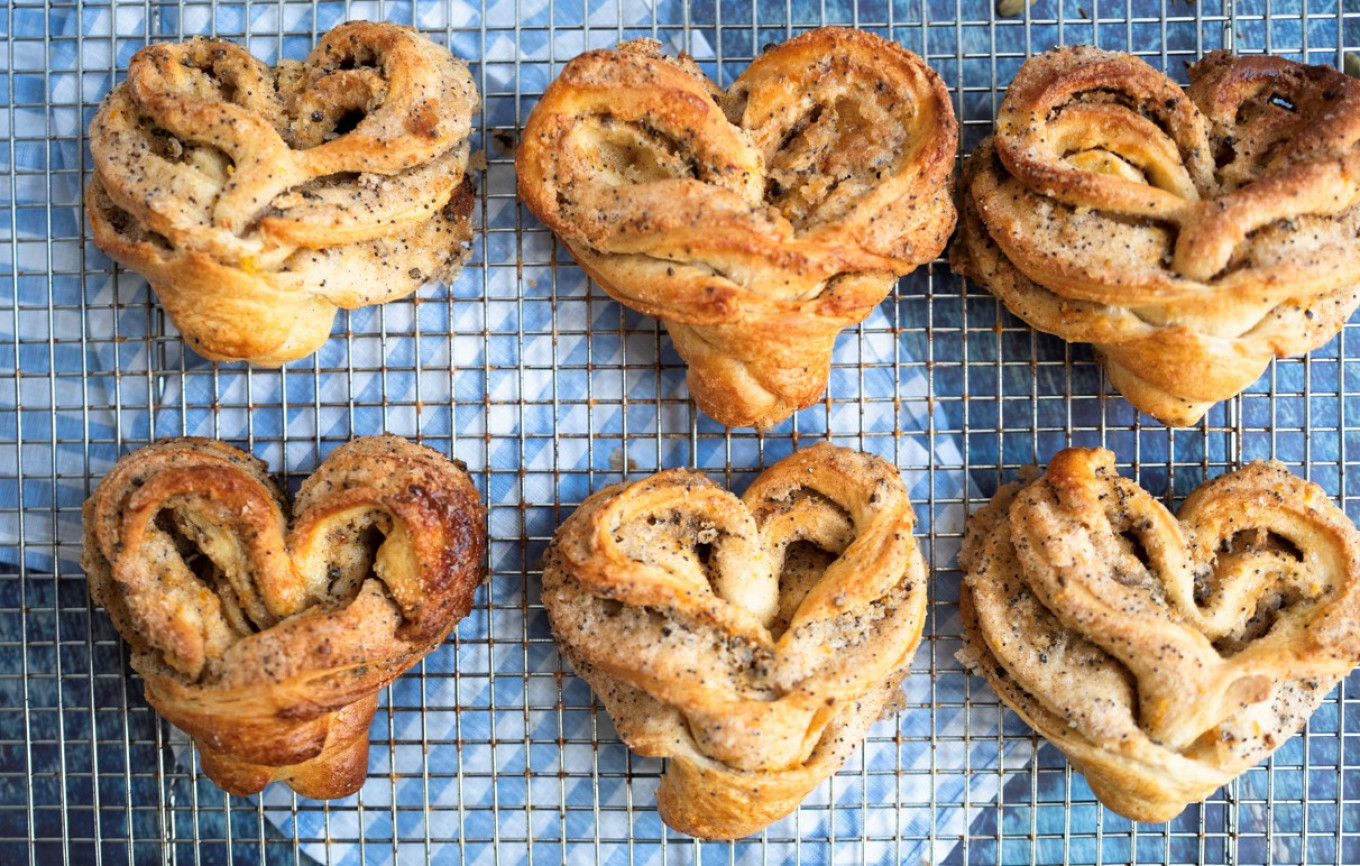
Karlsson's Plyushki
Ingredients
Plyushki dough
- 1 package (7 grams) instant yeast
- 1 cup (235 ml) whole milk, warmed to 105ºF
- 1 Tbsp orange zest
- ⅔-cup (155 ml) granulated sugar
- ½-cup (117 grams) unsalted butter, softened to room temperature
- 1 tsp salt
- ½-tsp ground cardamom
- ½-tsp cinnamon
- ¼-tsp black pepper
- ½-tsp vanilla extract
- 2 eggs at room temperature, lightly beaten
- 4-½ cups (560 grams) all-purpose flour
Plyushki filling
- 1-½ cups (300 grams) granulated sugar
- 2 Tbsp orange zest
- 1 Tbsp cardamom seeds, crushed in a mortar and pestle
- ½-Tbsp cardamom seeds, whole
- 2 tsp cinnamon
Butter mix
- ½-cup (117 grams) unsalted butter
- ½-cup (117 ml) fresh orange juice
- ¼-tsp orange extract
Egg wash
- 1 egg
- 2 tsp cold water
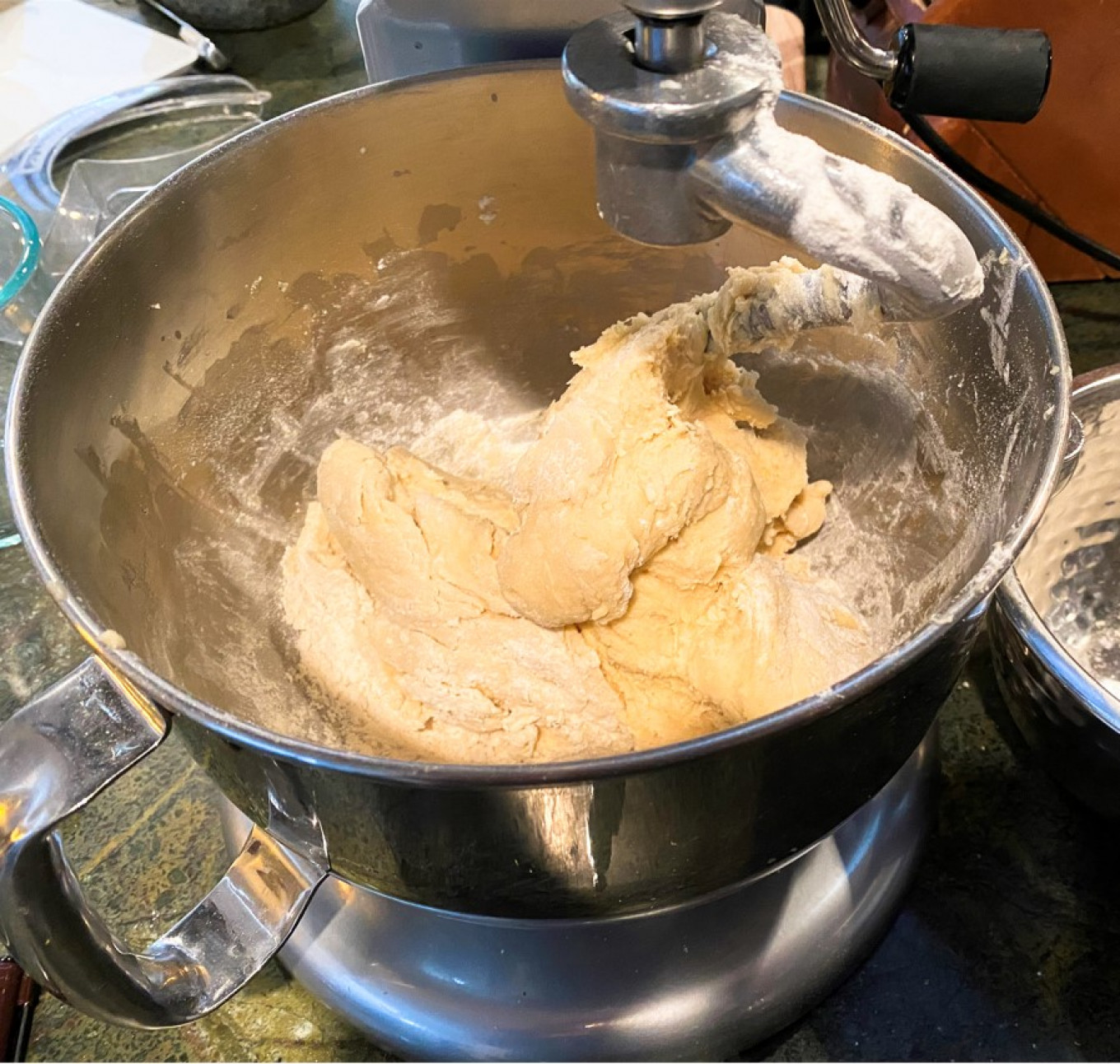
Instructions
- Combine the warmed milk, yeast, and 1 tsp of the sugar into the bowl of a standing mixer and whisk gently to combine. Leave to proof for 10 minutes until frothy.
- Work the orange zest into the remaining sugar with your fingers.
- When the yeast mixture is frothy and bubbly, add the orange zest and sugar mixture and mix with the paddle attachment on low (2 on a Kitchen Aid). Add the softened butter and mix for 1-2 minutes until the butter has broken up into smaller pieces. Add the spices, salt, vanilla extract and continue to mix on low.
- Add the beaten eggs to the mixture. Attach the dough hook to the mixer and add the flour gradually in ½-cup (117 ml) increments, allowing several turns to incorporate the flour. Do not rush this step and stop to scrape down the sides of the bowl as needed. The mixture will gradually turn into an elastic dough that pulls easily from the sides of the bowl. Note that you may not need all the flour to achieve this consistency.
- When the mixture is fully incorporated into an elastic dough, raise the speed to medium (4 on a Kitchen Aid) and knead for 5 minutes. Turn the dough on to a lightly floured surface and knead by hand for another 3 minutes. The dough should become even more elastic and easy to handle.
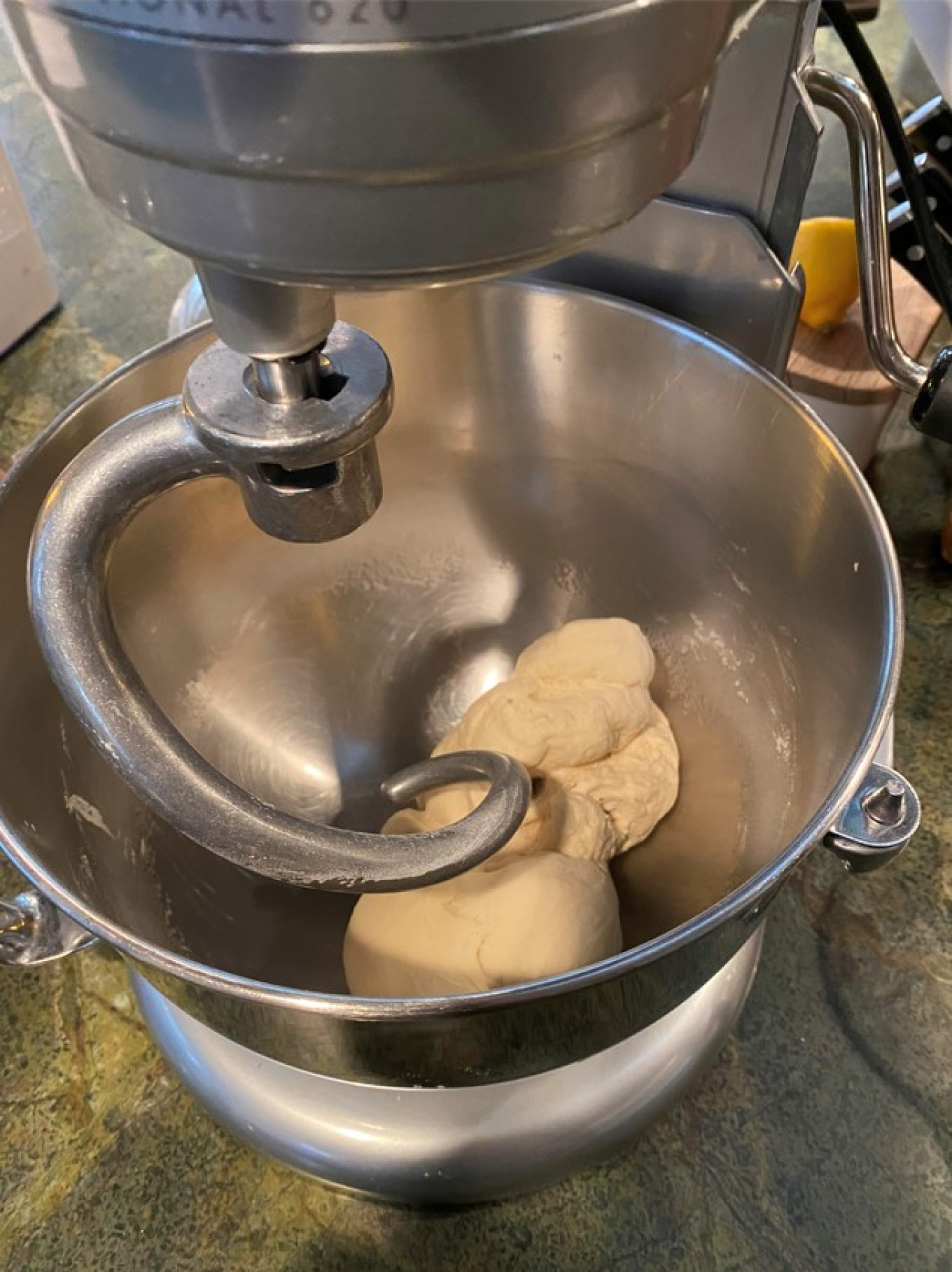
- Shape the dough into a ball and place it in a lightly oiled non-reactive bowl. Lightly oil the top of the dough, cover, and place in a warm location to proof for 2 hours or until the dough has doubled in size. If your oven has a proofing setting, use this, but you can also preheat the oven to 200ºF (93ºC), switch it off when it reaches full heat, then wait 15 minutes and place the dough inside the oven.
Make the filling
- While the dough is proofing, make the filling for the plyushki. Work the orange zest into the sugar until it is fully incorporated, and the sugar takes on the consistency of slightly wet sand. Add the ground and whole cardamom seeds, cinnamon, and poppy seeds and use a fork to thoroughly combine.
- Melt the butter and orange juice in a small saucepan and whisk to combine. When fully melted and incorporated, add the orange extract. Cool to room temperature. You may need to gently reheat the mixture before using.
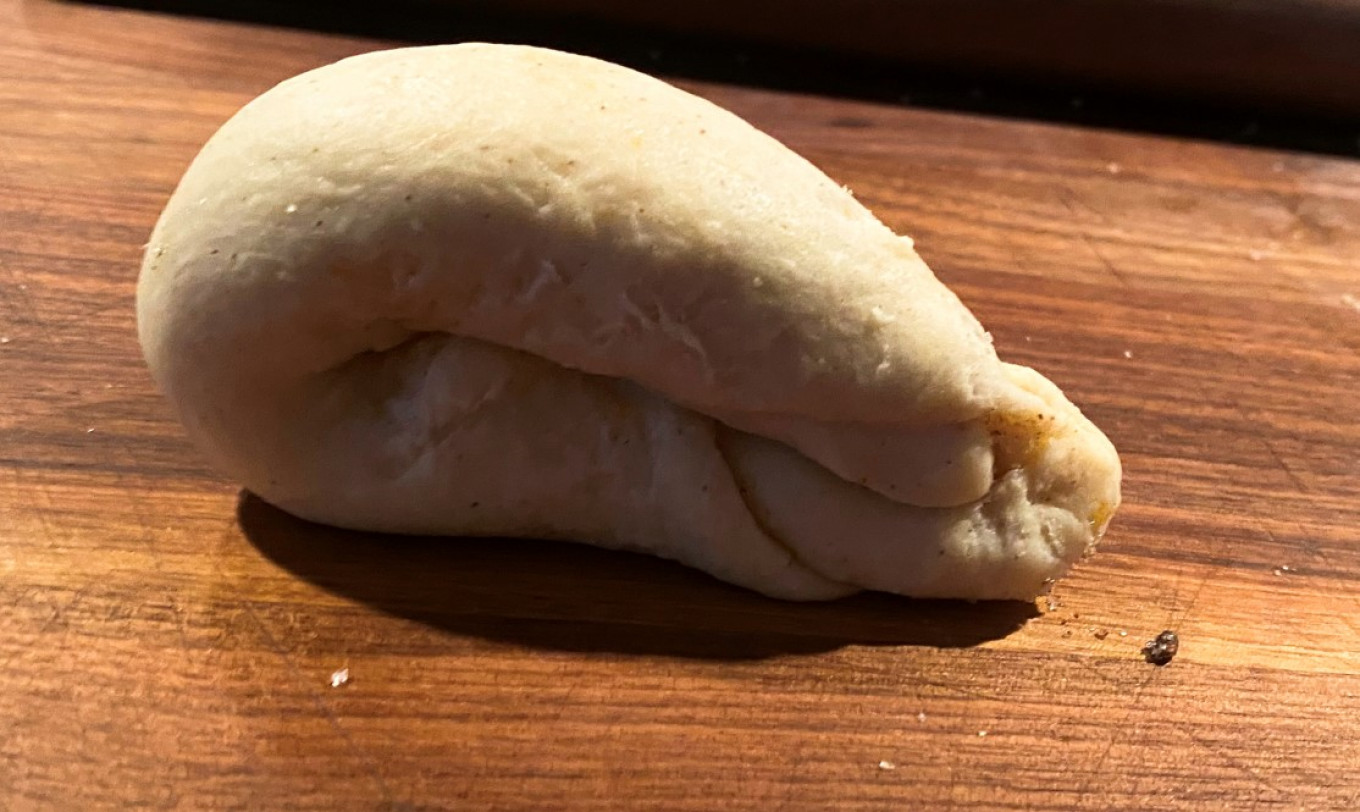
Assemble the plyushki
- Preheat the oven to 350ºF (180ºC) and line two baking sheets with parchment paper.
- Tip the dough out on to a lightly floured surface, punch it down, then knead it into a disk. Divide the dough into four equal parts. Work with one part at a time, and keeping the other dough covered with a damp cloth so it does not dry out.
- Divide each part into thirds — each third should be approximately 100 grams (3.5-oz). Roll each part into a rectangle about ⅛-inch thick. Brush the butter mixture over the rectangle, then spoon the sugar mixture onto the dough, leaving a ¼-inch rim around the perimeter. With clean hands, roll the rectangle into a tight log from the long end, and pinch the seams to combine.
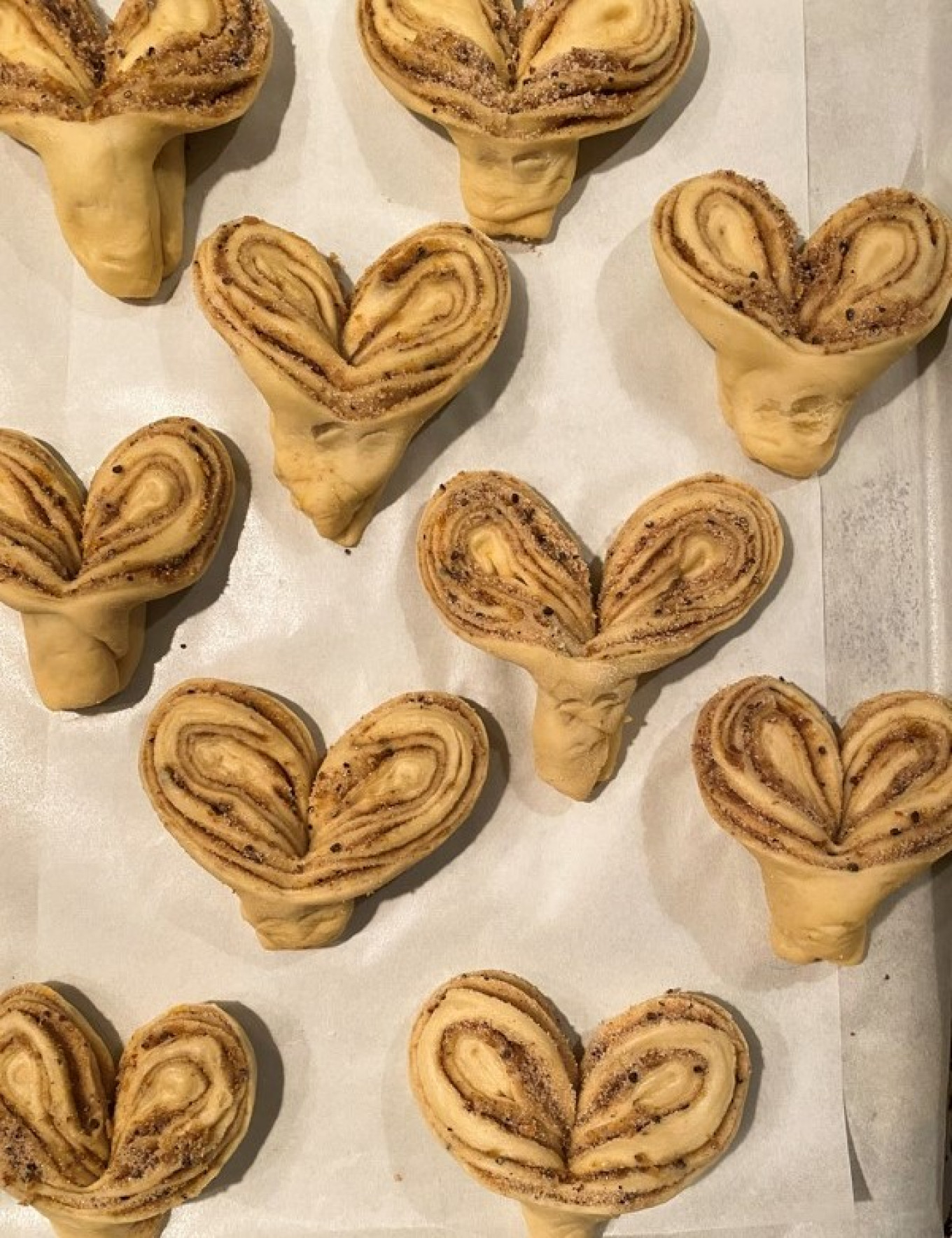
- Fold the log lengthwise with the seam sides together. Press the ends together to seal and turn the log flat side up (so that the seams are on the sides). Use a small sharp knife to slice into the log at the folded end about two-thirds of the length of the log. Gently open the cut edges, to form a heart shape. Gently arrange the plyushki on the prepared baking sheet, leaving space between them as they will expand as they bake. Press the stem of the heart down gently.
- Brush the egg wash onto the plyushki, skirting around the exposed filling. Bake in the preheated oven for 22 minutes. Don’t worry if some of the filling has escaped and caramelized into a lacy halo, you can easily remove this when the plyushka is completely cool. Cool the plyushki on the baking sheet for 10 minutes, then transfer to a wire cooling rack to cool completely.
Plyushki will keep up to 5 days in an airtight container.
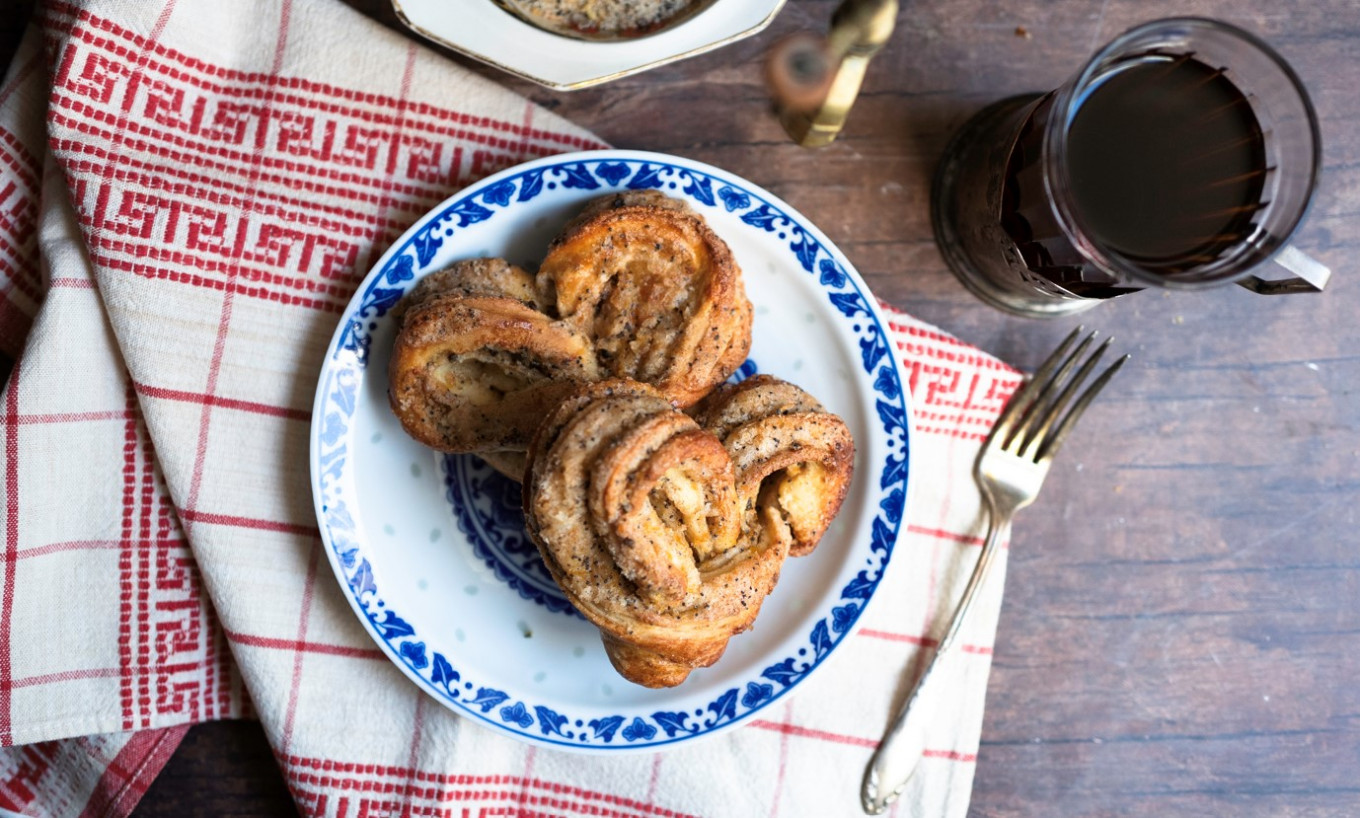
A Message from The Moscow Times:
Dear readers,
We are facing unprecedented challenges. Russia's Prosecutor General's Office has designated The Moscow Times as an "undesirable" organization, criminalizing our work and putting our staff at risk of prosecution. This follows our earlier unjust labeling as a "foreign agent."
These actions are direct attempts to silence independent journalism in Russia. The authorities claim our work "discredits the decisions of the Russian leadership." We see things differently: we strive to provide accurate, unbiased reporting on Russia.
We, the journalists of The Moscow Times, refuse to be silenced. But to continue our work, we need your help.
Your support, no matter how small, makes a world of difference. If you can, please support us monthly starting from just $2. It's quick to set up, and every contribution makes a significant impact.
By supporting The Moscow Times, you're defending open, independent journalism in the face of repression. Thank you for standing with us.
Remind me later.



